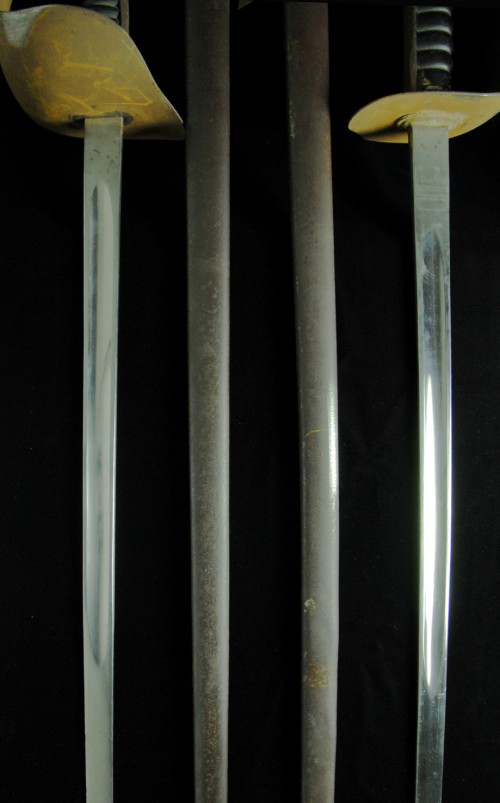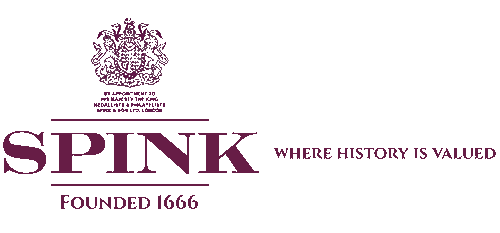
Auction: 9022 - Orders, Decorations, Medals & Militaria
Lot: 412
Two Non-Regulation British Military Swords An extremely unusual sword, with 34 1/4-inch straight blade bearing the name of Hamburger Rogers & Co, London, with 12-inch fuller both sides, the back sharpened for the last 8 inches, guard shaped as for infantry officers´ 1895 pattern but of plain sheet metal without piercing or decoration, bearing traces of sand-coloured drab paint, ribbed grip of painted wood with chequered steel backstrap and domed pommel generally similar to that of the contemporary Heavy Cavalry officer´s sword. Plain steel scabbard with opposed fixed suspension-rings (one ring now missing); and another sword, similar, but with a plain and unmarked 32-inch straight fullered blade, the last quarter-inch of the point filed off. The guard identical to that of the previous item, the grip similar, but with a slightly curved backstrap generally resembling the 1888 Household Cavalry trooper´s sword. The scabbard also plain steel with opposed fixed rings Estimate £ 200-300 Although several of the individual components of these swords appear familiar, the weapons as a whole are curiosities of some considerable interest. There is no mention of such swords in either edition of Robson. The Hamburger Rogers name on the blade of the longer one, and the traces of paint on the guard, strongly suggest that it was purchased for service use, not merely produced as experimental examples in the cut-versus-thrust controversy which raged among British cavalrymen at the end of the 19th Century. A theory which has been put forward is that the longer sword, with a blade so closely resembling that of the Infantry Officers 1892 pattern sword (albeit slightly longer) was purchased by a volunteer unit for use in the Boer War. It should be remembered that in 1900 the infantry 1892 blade would have been the only dead-straight blade available. The opposed fixed rings on the scabbards of both weapons suggest that they were designed for mounted use; possibly the shorter of the two was used by officers of mounted infantry.
Sold for
£210




